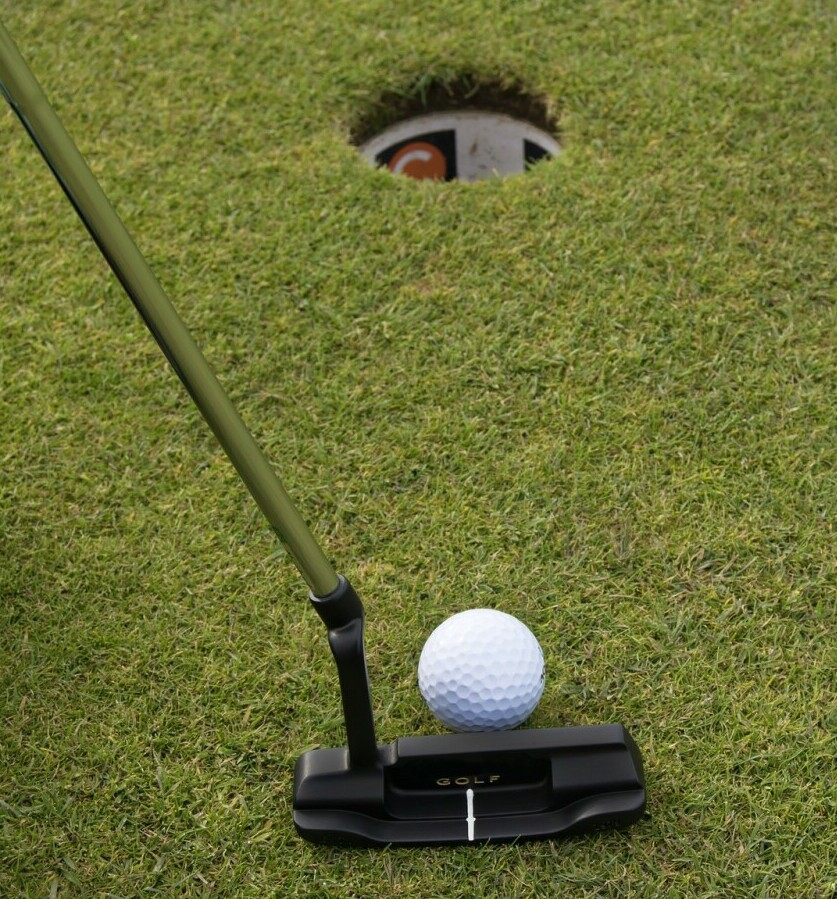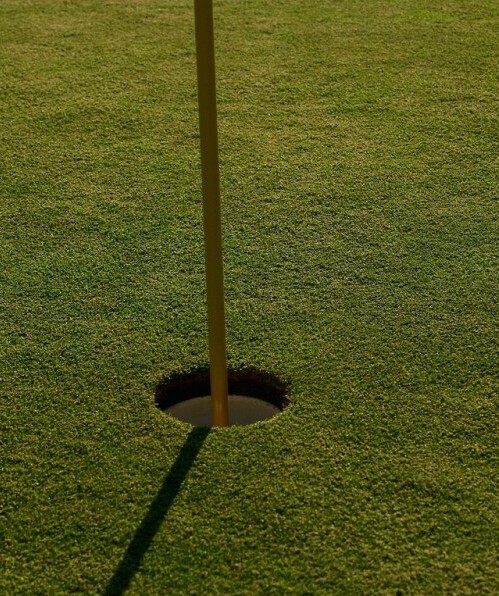How To Putt Golf Ball


Fore! Quick note: a few links here are affiliate links. If you snag gear through them, I earn a small commission — no extra strokes added to your game.
Let’s get right to the heart of the matter: Putting in golf isn’t just about tapping the ball into the hole. It’s an art form, a marriage of precision, patience, and strategy, masquerading as a simple stroke. So, what is putting exactly?
It’s the part of the game where you use a putter, a special club with a flat face, to roll the ball into the hole from a short distance away, typically on the green. We’re going deep here to help you get the most out of your putting game. Buckle up, because the golf viking is about to give you the lowdown on putting.
Your short game is a vital part of your repertoire and shouldn’t be overlooked. Putting well can save you strokes on the scorecards and rescue you from some chips that were off the mark.
Improving your putting is essential if you want to become a solid golfer, and with practice and the knowledge you gain here, that’s exactly what you will become.
This isn’t just about powering the ball over long distances; it’s about the subtlety of the touch and the understanding of the green’s contours. A well-executed putt feels effortless but is the result of meticulous calculation and control.
It’s so important to be good at putting because it can make or break your score. After all, the ball has to end up in the hole to complete each hole, and it’s on the green where most strokes can be saved or squandered.
You’re going to find out that the key to good putting isn’t just in the technique—it’s equally in the mind. Confidence and composure go a long way when you’re on the green. A golfer who has harnessed the art of putting exudes calm and has a plan for each stroke.
Believe it or not, fewer putts per round can drastically reduce your overall score, turning a decent round into a great one. Golf can be a mental game as much as a physical one, and this is most evident when you are on the greens.
To truly grasp the essence of putting, you need to start with the basics, which is where many golfers often jump ahead. Ground yourself in the fundamentals of a solid putt, from grip to stance, to ensure you’re addressing the ball the correct way every time you step onto the green. This solid foundation is where we’ll turn next, focusing on the anatomy of a successful putt.
Accuracy on the greens starts with equipment. Check out most accurate golf putters to boost your confidence.

The Secrets to a Successful Putt
I’m going to kick this off by getting straight to the heart of the matter; finding the right grip and stance. Your grip is your only connection to the golf club, so it’s crucial to get it right. Choose something that resonates with you and allows for a smooth stroke. A neutral grip is a good starting point for most golfers; it provides a balance between strength and control.
You’re going to find out about aligning your body and the golf ball effectively, which is just as pivotal. It’s not just about the hands or the club; it’s also about how your entire body works in unison. Place your feet shoulder-width apart for stability, and ensure your eyes are directly over the ball. This alignment helps maintain a straight putting path. Keep your head down and follow your club through the ball.
Understanding the dynamics of the putting stroke is another fundamental aspect. The stroke should be a simple back-and-forth motion with negligible wrist action. Use your shoulders to drive the movement, keeping the putter head low to the ground and striking the ball with a gentle, yet firm touch. Too much wrist action can actually be detrimental to your putt, so let your shoulders and body provide the momentum in your putt. Remember, in putting, finesse trumps force.
This isn’t just about physical technique; it’s also about the mental aspect of successful putting. In my opinion, a clear mind and focused intention are indispensable. Visualize the ball’s path to the hole and trust your alignment and stroke to do the rest. The less cluttered your mind is, the more likely you’ll sink the putt. The best putters in the game are focused and mentally tough to block out all of the excess thoughts that may come into your head.
Now, you’re all set with the foundational knowledge you need to make a successful putt. But even with the best techniques in place, there are still pitfalls waiting for you on the green. I’m here to help you navigate those potential pitfalls and iron out the issues that commonly plague golfers’ putting game. Identifying some of the main issues that most golfers face in their putting can help you adjust your putt so that you can consistently make the best read on the greens.
If you’re working within a budget, explore best budget-friendly golf putters to find reliable options without overspending.

Navigating Common Putt Pitfalls
I’m going to tackle some of the common challenges you might face when putting. Every golfer, at some point, deals with putting woes, but don’t worry too much about it because identifying these issues is the first step to solving them. Recognize what you are doing in your putt, and then let’s concentrate on fixing the issue.
Let’s start with the mental game. Putting can be nerve-wracking, especially with the pressure to perform. Those nerve-inducing, knee-knocking six-footers for par? They can get to anyone. It’s crucial to develop a routine and mindset that helps you stay calm and focused. Remember, confidence on the putting green is more than half the battle. Keep your mind uncluttered and focused on the ball and you will gain the mental fortitude to putt well even in stressful circumstances.
Consistency in putting is another area where many struggle. Inconsistency often stems from a lack of a repeatable stroke or changing one’s technique too frequently. Choose something that resonates with you, and stick with it. Frequent changes are a recipe for uncertainty. This of course will improve with your commitment to practice and getting better at your putting game.
Lastly, adjusting for the breaks and slopes of the green can trip up even seasoned golfers. This skill requires an understanding of how the ball rolls and how to read the subtle topography of the green. And guess what? The tips I’m going to offer you next on judging speed and line will help you negotiate these tricky aspects of putting.
Distance control is just as important as aim. Read best golf putters for distance control to refine your touch.

Perfecting Your Putting: Speed, Line, and Lasting Tips
Putting a golf ball is an intricate dance between precision and intuition. Judging the speed and line on the greens isn’t just about the mechanics; it’s about learning to read the subtle nuances of the surface and matching it with the right amount of force.
Speed and line judgment are crucial because they determine how the ball will travel to the hole. Get them right, and you’re on your way to becoming a putting maestro. To help with this, always start with the basics: keep your eyes on the ball, follow through with your stroke, and stay as steady as possible. Let’s get into some basic tips to help you work on your putts.
Here are some practical tips to fine-tune your putting game:
– Practice different speeds and distances to get a feel for your stroke and the greens. You will get into many different situations on the greens as you play more often and different courses. Your experience will help you learn how to tackle even the most difficult of greens.
– Find a putting routine that works for you and stick to it for consistency. There are multiple ways to putt and it’s up to you to figure out which works best for you. Once you find a style that works, then continue to practice so that your going off of muscle memory.
– Simulate pressure situations in your practice to build confidence. There are times when certain situations may get the best of you, and the best way to combat that is to practice being in different situations so that you will know how to handle it.
– Don’t overlook the importance of the right equipment; a properly fitted putter can make a world of difference. This might require some trial and error to determine what putter is best for you. Try different putters and once you figure out what works for you, then put in the work.
Remember, in putting, as in life, there’s always room for improvement. Every missed putt is an opportunity to learn, and every successful one is a step towards mastery. Keep practicing, remain patient, and adjust your techniques as you gain more experience on the greens. Even the most decorated professionals can miss putts, so never stop working on your game.
I really hope that you’ve gathered some insights into the essentials of putting with this guide. Putting might be one of the most challenging aspects of golf, but it’s also one of the most rewarding. Choose something that resonates with you from these tips, and you’ll surely see progress in your game. You’ll be a masterful putting viking in no time.
Green-reading is a skill that pairs with putting. Learn more in how to read a putt in golf.


